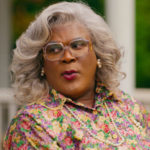To The Aotg.com Community,
It is with a heavy heart that we announce we will no longer be updating Aotg.com. Back in 2007, when we started, there was a lack of access to information about film, television, and commercial editing. We wanted to fix that by creating a central location for content about editing to be stored.
Since then, we've watched the amount of content about editing on the internet grow exponentially. We've also watched social media tools come and go with that growth. Does anyone remember Google Wave!? These social media tools changed how people access and search for media and information. People tend to turn to Facebook, Youtube, Twitter, and Instagram for their news and information, and those are all great tools to promote your sites, but as a site that aggregates links to other sites for users, it just doesn't work for us.
We will keep the site live but archive the ability to add links and comments. We will keep our database live with the links for those who desire to use it to search for editing information and research.
Our podcast, The Cutting Room, will move over to the Filmmakeru.com website and will continue to be a place for interviews with editors and other film professionals.
Everyone who worked for Aotg.com loved what we created and are proud that we could help so many editors find content that spoke to them.
I look forward to seeing everyone at the various post events worldwide in the coming years!
Yours truly,
Gordon Burkell
Aotg.com Founder
Tag: lut
Creating Dailies in Davinci Resolve 9
January 11, 2013, 07:49 AM
https://www.aotg.com/creating-dailies-in-davinci-resolve-9/
Andy Shipsides from AbelCine once again makes a great video tutorial , where now he shows how to create dailies with a synced sound and applying LUTs in Davinci Resolve 9.
#blackmagic design#davinci#resolve#dailies#lutColor Management – Creating/Applying LUTs
December 13, 2012, 02:22 PM
http://training.abelcine.com/event/digital-technic...
Many of the latest camera systems offer either Log or Raw recording modes that give us the most possible information out of the camera. These features are great at keeping the original camera ‘negative’ as clean as possible, but at the same time they can leave your image on set looking very flat and boring. This is where the use of Look Up Tables (LUT) comes in, which are offsets that allow you to manipulate your image and create a look without effecting the camera originals.
#color#camera#lutLUTs Part 1: What is a LUT?
December 10, 2012, 09:10 PM
http://www.fallenempiredigital.com/blog/2012/12/04...
A LUT, or look up table, changes color from one value to another based on a list of values. For video and motion graphics, a LUT is useful for matching footage from one source to another (i.e. a 3D render to live action film), for visual effect (i.e. vintage film emulation), or for output preview (i.e. film stock, digital projection, and DVD).
#color#lut
Newest from AOTG.com
-

Daniel George McDonald on Editing Cheer's Season 2 Finale
Daniel George McDonald sits down to discuss creating the finale for Cheer Season 2.
-

Editing The Black Lady Sketch Show
Gordon sits down with the editorial team of The Black Lady Sketch Show to discuss their approach to ...
-

Philip White on Crafting A Madea Homecoming's Music
Gordon sits down with Philip to discuss his work with Tyler Perry and his latest film A Madea Homeco...
Site Links
Tools
Sister Sites
© 2007-2025 www.aotg.com Ver. 3.0 All Content created and posted by Art of the Guillotine users Art of the Guillotine graphics, logos, designs, page headers, button icons, scripts, and other service names are the trademarks of Art of the Guillotine Inc. Use of this material outside of this site is strictly prohibited.